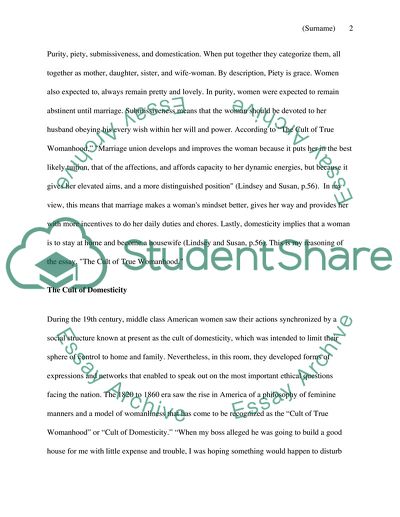Cite this document
(“How did the Cult of True Womanhood encourage women in the 19th century Essay - 1”, n.d.)
Retrieved from https://studentshare.org/history/1629770-how-did-the-cult-of-true-womanhood-encourage-women-in-the-19th-century-to-become-involved-in-social-reform-in-what-ways-did-this-gender-ideology-influence-the-reform-agenda-of-a-social-movement-of-the-19th-century
Retrieved from https://studentshare.org/history/1629770-how-did-the-cult-of-true-womanhood-encourage-women-in-the-19th-century-to-become-involved-in-social-reform-in-what-ways-did-this-gender-ideology-influence-the-reform-agenda-of-a-social-movement-of-the-19th-century
(How Did the Cult of True Womanhood Encourage Women in the 19th Century Essay - 1)
https://studentshare.org/history/1629770-how-did-the-cult-of-true-womanhood-encourage-women-in-the-19th-century-to-become-involved-in-social-reform-in-what-ways-did-this-gender-ideology-influence-the-reform-agenda-of-a-social-movement-of-the-19th-century.
https://studentshare.org/history/1629770-how-did-the-cult-of-true-womanhood-encourage-women-in-the-19th-century-to-become-involved-in-social-reform-in-what-ways-did-this-gender-ideology-influence-the-reform-agenda-of-a-social-movement-of-the-19th-century.
“How Did the Cult of True Womanhood Encourage Women in the 19th Century Essay - 1”, n.d. https://studentshare.org/history/1629770-how-did-the-cult-of-true-womanhood-encourage-women-in-the-19th-century-to-become-involved-in-social-reform-in-what-ways-did-this-gender-ideology-influence-the-reform-agenda-of-a-social-movement-of-the-19th-century.


